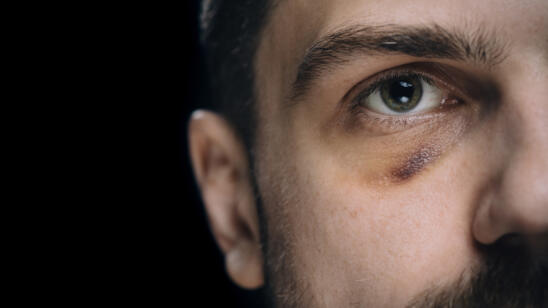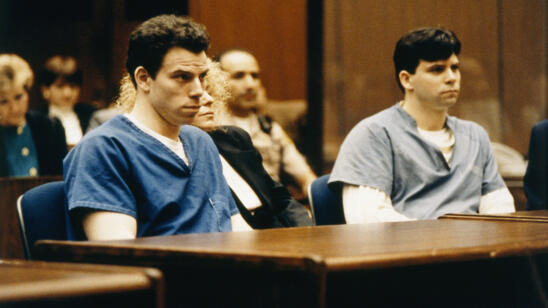After 48-year-old Missouri resident Claudine “Dee Dee” Blanchard was stabbed to death in June 2015, her 23-year-old daughter Gypsy Rose Blanchard celebrated with a post on Facebook, declaring “The B—- is dead!”
Later Gypsy Rose owned up to the crime, admitting to police that she’d helped devise the plan in which her boyfriend, Nicholas Godejohn, would stab her mother to death.
But Greene County Prosecutor Dan Patterson offered Gypsy Rose a plea deal: 10 years in prison on a second-degree murder charge—the minimum possible sentence.
He did so because Gypsy Rose had been abused by her mother for years, forcing her to undergo unnecessary medical procedures including eye surgery, salivary gland removal and insertion of a feeding tube. This set of circumstances was so extreme it couldn’t help but sway the prosecutor’s leniency.
[Stream Gypsy Rose: Life After Lockup in the Lifetime app.]
But how often does that work? When abuse victims kill their abusers, does the law take the circumstances into account?
A&E True Crime looks at several cases to explore the issue further.
Francine Hughes
After more than a decade of physical abuse at the hands of her alcoholic husband, James Hughes, Francine Hughes decided to take matters into her own hands.
On the night March 9, 1977—after James had severely beaten her, threatened her with a knife in front of their children, made her eat food off the kitchen floor and raped her—something in Francine snapped. After James passed out, she doused his bedroom in gasoline and lit a match, killing him.
Francine Hughes pleaded not guilty by way of temporary insanity—and won her case.
Cindene Pezzell, director of the National Defense Center for Criminalized Survivors, an organization which provides legal services to abuse victims who kill their abusers in self-defense, says the Hughes case was a watershed moment, but that it hardly created a road map for other defendants seeking mercy from the courts.
“It was important in that it did shine a light on this phenomenon, but [the insanity defense] is a longshot,” Penzzell tells A&E True Crime.
Joshua Dressler, distinguished university professor of law emeritus at the Ohio State University, who has written about battered women who kill their abusers, agrees. “Juries don’t like the insanity defense,” says Dressler. “It’s the defense of last resort. That’s because insanity is not a justification. It’s an excuse: I did the wrong thing, but you shouldn’t blame me.”
The Hughes case was an exception to that rule. The acquittal made her a public figure, with her story later becoming both a book, The Burning Bed, and then a made-for-TV movie of the same name starring Farrah Fawcett.
The Menendez Brothers
Not every abuse victim who kills their abuser is a battered woman.
In 1989, brothers Erik and Lyle Menendez killed their father and mother, Jose and Kitty, with a series of shotgun blasts in their Beverly Hills home. The brothers said their crime was motivated by Jose Menendez’s sexual abuse of Erik and a fear that he would eventually kill them.
The brothers were 18 and 21 years old, respectively, at the time of the double homicide.
The case was tried multiple times. In January 1994, two separate juries (one per brother) deadlocked on murder and manslaughter charges, with individual jurors telling the press afterwards that they couldn’t figure out how much weight to put on the abuse allegations.
In the retrial, the judge barred much of the abuse testimony from being admitted into evidence. Each brother received two guilty counts of first-degree murder and two guilty counts of conspiracy to commit murder. They were each given consecutive life sentences, one for each murder, without the possibility of parole.
Dressler says cases like those of the Menendez brothers are “nonconfrontational,” in which the defendant did not face imminent threat from their abuser. In their case, Jose and Kitty were watching television at the time of their murders. Cases like these, Dressler says, are much harder on the defendant than ones in which the chronic abusive behavior seems once again imminent.
“With nonconfrontational cases, it’s pretty darn hard…to get the defendant off.”
Nicole Addimando
In September 2017, Nicole Addimando shot and killed her partner, Christopher Grover, in their shared home in Poughkeepsie, New York.
At her trial, prosecutors claimed that Grover was sleeping at the time he was shot; Addimando said she was in imminent danger. A medical examiner was unable to provide conclusive evidence either way. In her defense, Addimando detailed a history of severe physical and sexual abuse.
After initially being sentenced to 19 years to life for second-degree murder and second-degree possession of a criminal weapon, Addimando had her sentence was reduced to seven and a half years by the New York State Supreme Court under the Domestic Violence Survivors Justice Act, which allows for such sentencing reductions in the event that the perpetrator had been abused by their victim prior to the homicide.
According to Pezzell, New York State’s law is one of the first (after California in the 1990s) to bring meaningful relief for “incarcerated survivors” caught in the criminal justice system.
“The culpability of somebody [who was abused] is really different from the culpability of somebody who devises a plan to kill their partner just so they can exert ultimate control over them,” Pezzell says. “Context is everything.
Related Features:
Mary Bailey: When a Young Girl Was Asked to Do the Unthinkable, It Changed Her Life Forever


